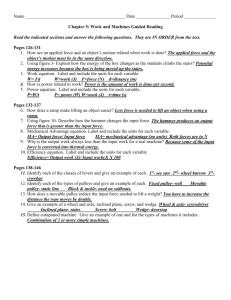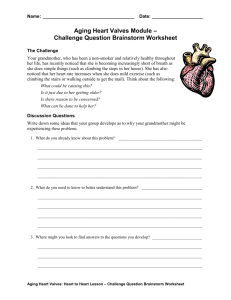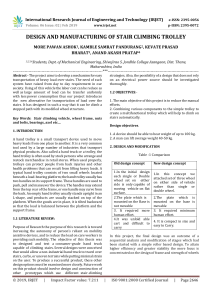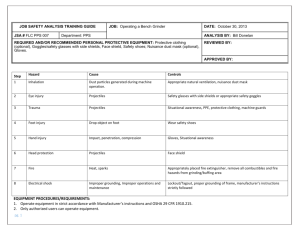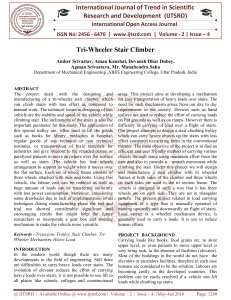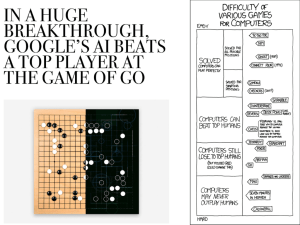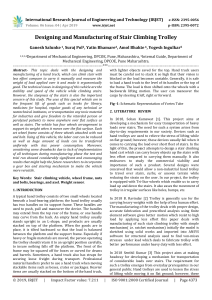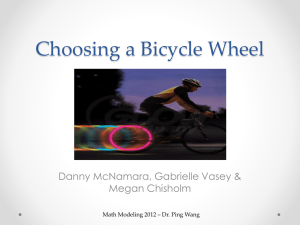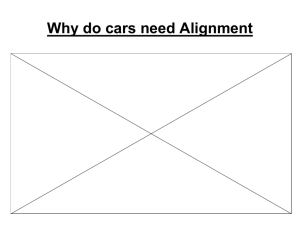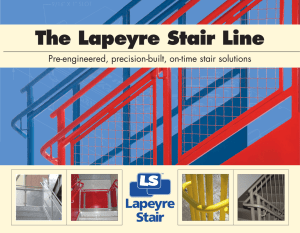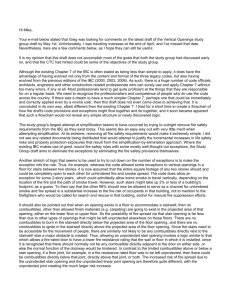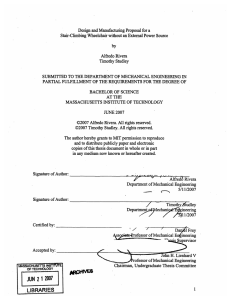Pervious implementations of Stair Detection and Climbing
advertisement
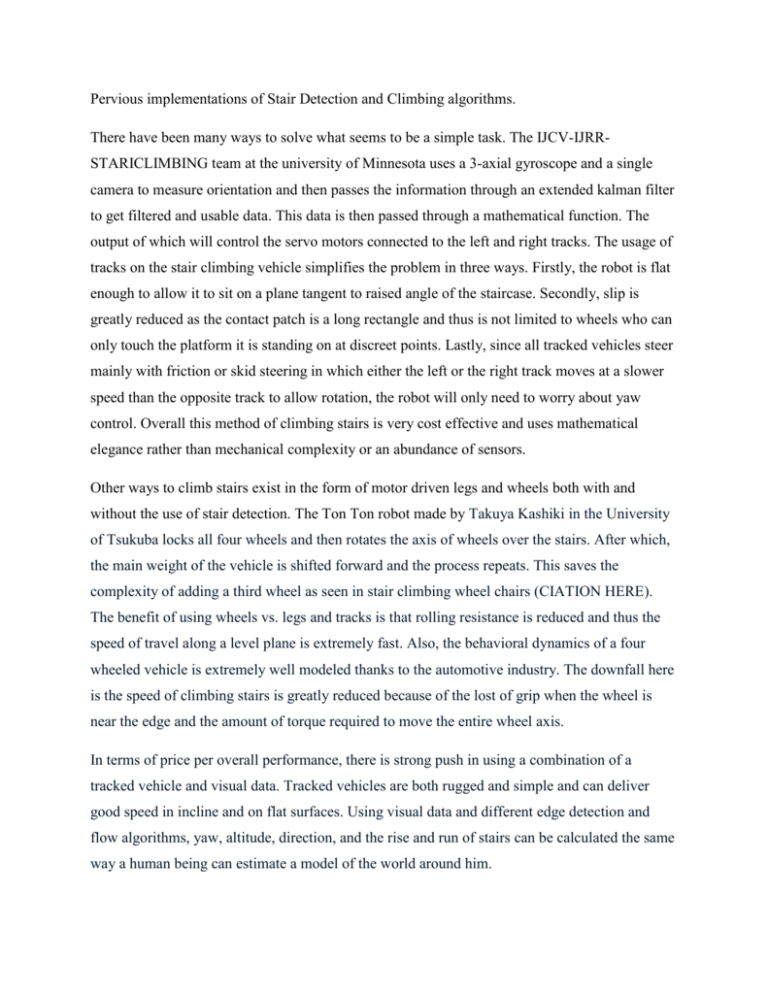
Pervious implementations of Stair Detection and Climbing algorithms. There have been many ways to solve what seems to be a simple task. The IJCV-IJRRSTARICLIMBING team at the university of Minnesota uses a 3-axial gyroscope and a single camera to measure orientation and then passes the information through an extended kalman filter to get filtered and usable data. This data is then passed through a mathematical function. The output of which will control the servo motors connected to the left and right tracks. The usage of tracks on the stair climbing vehicle simplifies the problem in three ways. Firstly, the robot is flat enough to allow it to sit on a plane tangent to raised angle of the staircase. Secondly, slip is greatly reduced as the contact patch is a long rectangle and thus is not limited to wheels who can only touch the platform it is standing on at discreet points. Lastly, since all tracked vehicles steer mainly with friction or skid steering in which either the left or the right track moves at a slower speed than the opposite track to allow rotation, the robot will only need to worry about yaw control. Overall this method of climbing stairs is very cost effective and uses mathematical elegance rather than mechanical complexity or an abundance of sensors. Other ways to climb stairs exist in the form of motor driven legs and wheels both with and without the use of stair detection. The Ton Ton robot made by Takuya Kashiki in the University of Tsukuba locks all four wheels and then rotates the axis of wheels over the stairs. After which, the main weight of the vehicle is shifted forward and the process repeats. This saves the complexity of adding a third wheel as seen in stair climbing wheel chairs (CIATION HERE). The benefit of using wheels vs. legs and tracks is that rolling resistance is reduced and thus the speed of travel along a level plane is extremely fast. Also, the behavioral dynamics of a four wheeled vehicle is extremely well modeled thanks to the automotive industry. The downfall here is the speed of climbing stairs is greatly reduced because of the lost of grip when the wheel is near the edge and the amount of torque required to move the entire wheel axis. In terms of price per overall performance, there is strong push in using a combination of a tracked vehicle and visual data. Tracked vehicles are both rugged and simple and can deliver good speed in incline and on flat surfaces. Using visual data and different edge detection and flow algorithms, yaw, altitude, direction, and the rise and run of stairs can be calculated the same way a human being can estimate a model of the world around him.
